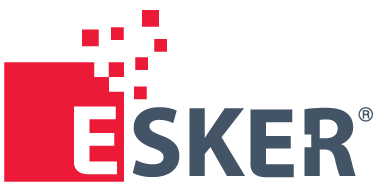Why Automating Both AR and AP Is Vital to Fiscal Fitness
Outdated manual accounting processes are costing companies significantly. The previous installment in this series explored how manual accounts receivable (AR) processes impede businesses’ cash flow and how automation offers a powerful solution to this problem. However, manual and paper-based payments are not solely an AR impediment: They also afflict accounts payable (AP), potentially having equally serious downstream consequences for businesses’ financial health.
Manual AP processes are expensive, labor-intensive and more susceptible to fraud and errors. While automating AR is vital to improving cash flow, failing to automate AP as well can undermine the benefits achieved. Incoming payments may be accelerated through AR automation, but outgoing payments remain slow and inefficient due to manual AP processes. This mismatch can hamper working capital management, accurate forecasting, decision-making and, ultimately, business success.
By automating both AR and AP, companies can avoid these pitfalls and create a fully optimized, end-to-end financial process. This solution improves cash flow, enhances visibility, strengthens relationships with both customers and suppliers, and drives overall financial efficiency.
- Manual Accounting Hurts Both Sides of the Ledger
- AR/AP Automation Improves Financial Health and Security
- Integrating Payment Portals Enhances B2B Relationships
- Why Firms Should Automate Both AR and AP
Many businesses, regardless of size, still rely on manual AR and AP processes, leading to slow, error-prone accounting that increases fraud risk. These hazards can create significant cash flow ramifications stemming from both sides of the ledger.
Manual processing leads to higher costs, error rates and inefficiencies in both AR and AP.Manual accounting processes create significant challenges for both AR and AP, hurting overall financial efficiency and business performance. Manual AR incurs higher costs due to paper-based invoicing, manual follow-up and labor-intensive cash application. Similarly, manual AP inflates costs through manual invoice processing, check printing and time-consuming approvals. These costly procedures directly impact the company’s bottom line.
65%of firms that still use paper checks experience check fraud.
The list of inefficiencies in manual processing goes on, including the risks of human error. For AR, mistakes in invoice generation, data entry and payment application can lead to billing errors, delayed payments and customer disputes. For AP, manual entry errors can cause incorrect, duplicate or missed payments to vendors. In addition, the laborious processes involved prevent teams from focusing on more strategic, value-adding activities.
Manual systems also fail to provide up-to-date information. AR lacks real-time visibility into customer payment status, while AP struggles with tracking invoice status and upcoming payment obligations. This lack of visibility hinders accurate financial forecasting and decision-making.
Manual processing slows down the entire cash cycle.The result of all these hurdles is slower payments. For AR, slower invoice delivery and payment collection extend days sales outstanding (DSO) — the length of time it takes to get paid for sales. For AP, manual approval and paper checks delay vendor payments, potentially missing early payment discounts. This negatively impacts working capital management and supplier relationships. These strained relationships can lead to lost business opportunities and unfavorable payment terms.
A recent survey revealed that 91% of small businesses face cash flow issues. As a result, 31% have missed or delayed major payments like payroll and rent. The most common consequences of these cash flow disruptions were lost growth opportunities and canceled projects. Moreover, two-thirds of small business owners said cash flow complications affected them personally, causing stress, anxiety and burnout. By addressing manual process challenges in both AR and AP, companies can create a more efficient, accurate and strategic financial operation that benefits the entire organization.
Legacy payment methods themselves cause delays and are vulnerable to fraud.Beyond processing, legacy payment methods are a hazard in and of themselves. Paper checks not only create frustrating payment delays for AR teams but also pose significant risks to AP teams. Despite the risks, many firms continue to rely heavily on paper check payments, even though 65% have experienced check fraud. Furthermore, these checks are typically sent by mail, despite a 10-percentage-point rise in fraud related to interference with the United States mail over the past year. Only 41% of firms managed to recover at least 75% of funds lost to fraud, while 30% recovered no money whatsoever.
AR/AP Automation Improves Financial Health and SecurityAdopting automated AR and AP with faster, electronic payment methods can streamline accounting, strengthen security and contribute to better overall financial health.
95%
of companies that fully automate AP processes achieve greater accuracy, efficiency and overall operational improvements.
Automating both AR and AP is crucial for achieving maximum financial efficiency.Automated AR and AP create a seamless financial workflow, reducing labor-intensive manual data entry and potential errors across the entire payment cycle. This integrated, end-to-end system enables faster invoice processing, approval and reconciliation. In addition, the inherent upgrade to digital payments significantly reduces the risk of fraud.
Integrating both AR and AP automation is crucial, moreover, because it provides a comprehensive view of an organization’s financial position. It does this by enabling real-time visibility into both incoming and outgoing cash flows. This holistic perspective allows for more accurate cash flow forecasting and better working capital management. AR automation speeds up invoice delivery and payment collection, while AP automation allows for strategic timing of outgoing payments. Together, they create a synchronized cash flow cycle, empowering firms to optimize liquidity and financial stability.
AR and AP automation combined can solve critical cash flow problems.According to PYMNTS Intelligence research, the benefits of automating accounting processes are directly proportional to the level of automation implemented. Currently, 65% of firms have automated at least some part of their AR processes, while 64% have automated at least part of their AP processes. However, 95% of companies that fully automate their AP processes report greater accuracy, efficiency and overall operational improvements. This compares to 84% of those that have partially automated.
Hence, recognition is growing around the need for full automation of both AR and AP, with most firms having further plans to innovate these processes. According to data from Esker, 83% of AP departments and 75% of AR departments see moving to fully electronic processing as important or very important.1
Integrating Payment Portals Enhances B2B RelationshipsPayment portals that integrate electronic payments and AR/AP automation can significantly improve B2B relationships. These solutions provide both customers and vendors with real-time visibility into invoices and payments.
Payment portals improve relationships with stakeholders.These portals offer suppliers and customers a self-service payment option that resolves automatically, greatly reducing the workload of accounting staff. Portals process payments on the back end, and many leverage real-time transaction rails to ensure immediate fund transfers. Payment portals also improve the transparency of accounting operations, providing better visibility into issues when errors occur. This allows accounting staff to resolve problems more efficiently, minimizing the disruptions to cash flow.2
Payment portals
improve transparency, streamline operations and accelerate transactions.
Automating both AR and AP in this way positively impacts relationships with customers and suppliers. Customers benefit from faster, more accurate invoicing and a smoother payment process, while suppliers appreciate timely payments and better visibility into payment status. These improvements foster stronger business relationships and potentially lead to more favorable terms.
Esker and Sovos recently partnered on a payment portal initiative.Esker and Sovos have interconnected their electronic invoicing platforms to offer enhanced payment portal capabilities for their customers. This partnership allows both companies to operate as Partner Dematerialization Platforms, a designation by the French government that enables financial companies to offer bespoke payment services. Esker and Sovos will operate their own payment platforms in France but collaborate on portal initiatives internationally. This collaboration will help AR/AP departments leverage payment portal technology and improve cash flow management for their firms.
Why Firms Should Automate Both AR and APDigital, automated AR and AP processes offer significant benefits to firms seeking to enhance their financial health and security. By transitioning from manual, paper-based systems to automated digital solutions, companies can reduce delays and errors while improving overall efficiency and accuracy.
One of the key advantages of both AR and AP automation is the substantial reduction in processing time. Automated systems can handle invoice creation, delivery and payment processing much faster than manual methods, accelerating the entire cash flow cycle. This not only improves a company’s financial position but also fosters better relationships with vendors and customers through timely payments and collections. Automation also significantly minimizes human error, a common issue with manual data entry and processing. The result is more precise financial management and more informed decision-making based on reliable data.
Enhanced visibility and reporting capabilities are another crucial benefit of AR and AP automation. Real-time insights into financial positions, outstanding invoices and future payments enable better cash flow management and more strategic financial planning. This increased transparency also supports compliance efforts and helps detect potential fraud sooner, thereby bolstering financial security.

Manual AP and AR processes can significantly disrupt corporate cash flow and increase costs. By automating these functions, businesses can streamline operations, improve efficiency and gain a competitive edge. A healthy cash flow isn’t simply earning more than you spend or sitting on a pile of cash. It’s about ensuring your organization can react to new opportunities quickly and without breaking the bank — a key to both short- and long-term growth.”
Ari WidlanskyManaging Director & U.S. Chief Operating Officer

1. [Esker and Strategic Treasurer. Transforming Payments: Improving Cashflow in AP & AR. eBook.]
2. [Esker. Esker Pay: Unlocking Cashflow With Integrated Payment & Reinforced Working Capital. eBook.]
The post Why Automating Both AR and AP Is Vital to Fiscal Fitness appeared first on PYMNTS.com.
